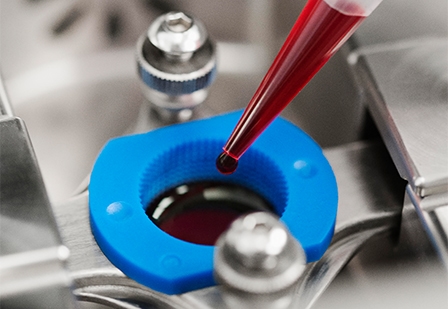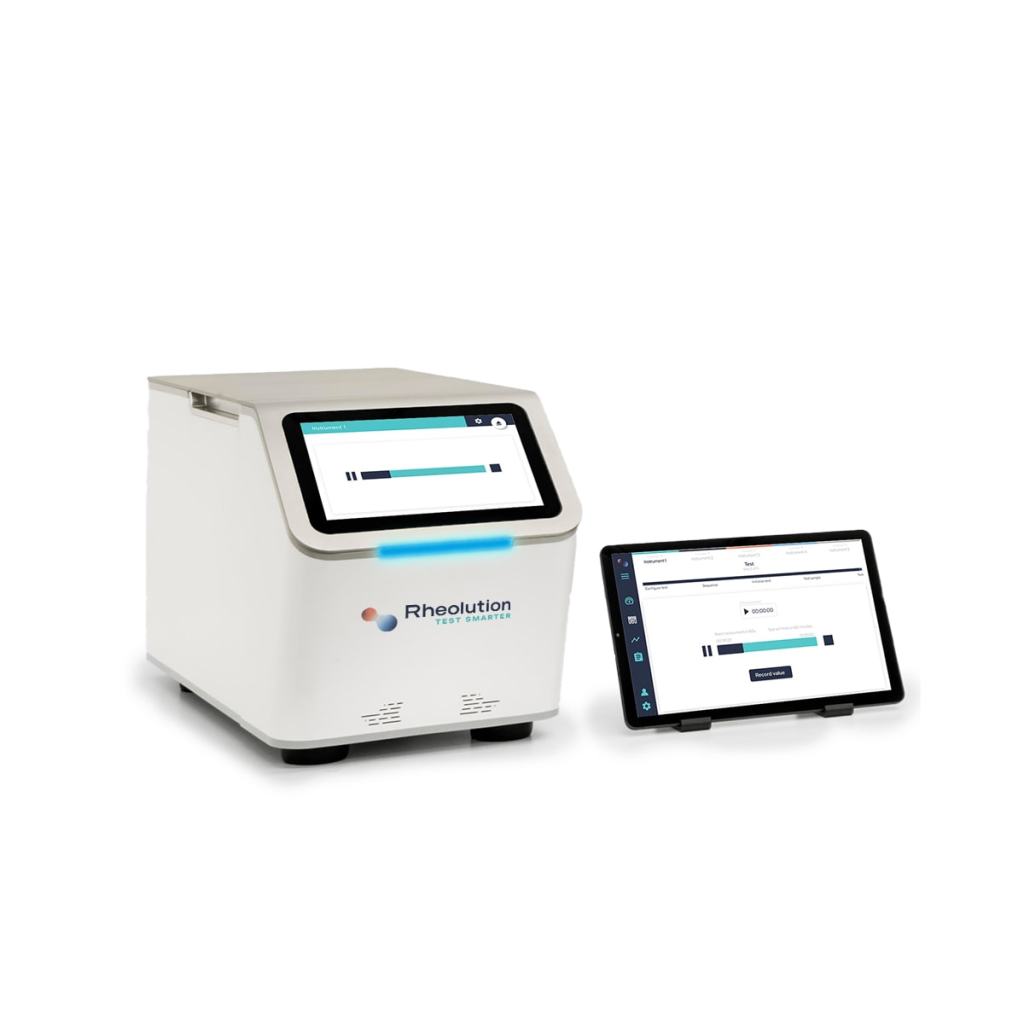Hemostatic Agents and Blood Coagulation

Hemostatic agents (HA) such as powders, adhesives, gauze and sealants have been used for decades to control bleeding and their demand has recently grown by the expansion of minimally invasive surgery and complex reconstructive procedures. Evaluating with precision the efficacy of hemostatic agents is crucial for product development and production.
Conventional testing instruments like rheometers, TEG, ROTEM, compression testers are not adapted for in vitro studies and do not provide a comprehensive evaluation of the effect of hemostatic agents on blood during the coagulation process. Therefore, visual inspection is often the only qualitative way to assess clot formation.

Here, we introduce the ElastoSens™ Bio as the new state-of-the-art tool for quantitative measurement of the effect of hemostatic agents on blood. The instrument measures and displays the change in strength (shear elastic modulus, G’) and viscous behavior (shear loss modulus, G’’) of the blood/HA complex as a function of time during clot formation. In addition, the clotting profile and clot stiffness of pure blood or plasma can also be precisely measured.
In this example, two commercially available HA were tested with whole blood at different concentrations. It clearly appears how increasing the HA dosage in the blood influences both the clot strength and the clot initiation time.
The ElastoSens™ Bio may be used in R&D to design more effective HA; in QC to improve the quality of products; and in preclinical studies to simulate in vivo conditions and better predict clinical outcomes.


Benefits of Contact-Free, Non-Invasive Measurements with the Elastosens™ Bio
- Test non-destructively the viscoelastic properties of bulk hydrogels, 3D bioprinted scaffolds and 3D cell-laden hydrogels.
- Apply programmable thermo and photo (UV) stimulations to deeply analyze your material.
- Follow the evolution of the same sample from formation to degradation non-destructively and over long periods of time.
- Get advanced and personalized Soft Matter Analytics™.
- Accelerate your formulation process while improving repeatability.
- Test bioengineered tissues in a cell-friendly and sterile environment.
- Operate a truly easy-to-use instrument designed for biologists, chemists and material scientists.
- Save time and material for R&D and QC operations.
- Customize your own testing system with up to 5 instruments thanks to the modularity of the ElastoSens™ Bio.
- Optimize your investments with affordable instruments that fit your needs and budget.
Visit the ElastoSens™ Bio product page
Related Application Notes
The human body has a natural mechanism to stop bleeding after an injury. Platelets migrate to the site of injury and start to form a soft blood clot. This activates other clotting factors in the bloodstream triggering a chain reaction to form a harder blood clot that will stay firmly in place.
The ElastoSens™ Bio was used to analyze the effects of hemostatic agents (HAs) on blood coagulation. The technology identified HAs that can alter clotting independently of the body's natural processes. These findings can optimize current HAs and aid in developing new ones.
The viscoelastic properties of coagulating blood can be correlated with several diseases and genetic conditions that affect the natural blood coagulation process including bleeding disorders, hemophilia, rare factor deficiencies, von Willebrand disease and platelet function disorders. Therefore, the evaluation of blood clot properties can be valuable for the study, diagnosis and eventually treatment of these diseases.
Hemostatic agents (HA, e.g. powders, gauzes, adhesives and sealants) have been used for decades to control bleeding. The demand for these agents is growing due to two major trends in surgical practice: the expansion of minimally invasive surgery and complex reconstructive procedures that are more limited in their capacity to obtain hemostasis.
Related Scientific Articles
There is a need for reliable and quantitative real-time assessment of blood properties to study and treat a broad spectrum of disorders and cardiovascular diseases as well as to test the efficacy of hemostatic agents. In this study, the real-time changes in viscoelastic/rheological properties of bovine whole blood during coagulation induced by different concentrations of calcium chloride (CaCl2; 15, 25, 35 and 45 mM) was investigated. For this purpose, a novel, contactless technique was used to accurately measure the clotting characteristics under controlled and sterile conditions. It was demonstrated that, increasing the calcium concentration from low values (i.e., 15 and 25 mM), led to shorter reaction time; however, a further increase in calcium concentration (i.e., 35 and 45 mM) favored longer reaction times. Additionally, increasing the CaCl2 concentration resulted in higher shear storage modulus (i.e., stiffer clots).






